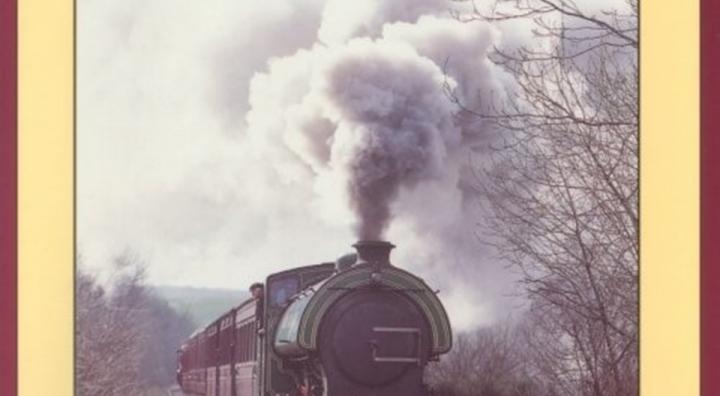Tanfield Railway preservation Museum
By Nigel Coulter
I was very happy to start volunteer work at the Tanfield Railway Museum the world’s oldest railway still in operation in January 2018 I have always had a passion for things about trains and railways. At first, I started at the Museum’s West Tanfield Railway station but very soon got involved in many other parts of the Railway Museum operations.
The early years of the railway as a preservation project concentrated on Marley Hill, preparing locos for steaming, working on the shed structure, and acquiring basic needs such as water and electricity. Locomotives No.21 (Robert Stephenson and Hawthorns engine of 1954 0-4-0st) and No.5 (Malleable) were steamed in public in 1973. The first passenger train ran for a week August 1975, using locomotives No.21, No.32 and Sir Cecil A Cochrane, and a small carriage acquired from the British Steel Corporation site at Teesside.
The preserved line was first built from Marley Hill to the current northern terminus, Sunniside Station, with passenger trains beginning on 2 July 1981, and an official opening ceremony on 14 July 1982. Andrews House station just south of Marley Hill sheds was completed between 1987 and 1989[3] and was equipped with platforms, a water tower, a station building and a footbridge. The first train south to Causey was on 27 July 1991, with the official opening ceremony being held on 15 August 1991. The first train further south to the current end of the line at East Tanfield occurred on 18 October 1992. East Tanfield Station itself was opened in 1997. The Causey to Tanfield section is through a wood lined gorge.
Part of the reason the line was preserved was the fact Marley Hill shed remained open until 1970. The vintage machinery in the workshop is still capable of full locomotive overhauls. The oldest locomotive on the railway was built in Gateshead in 1873, and all the railway’s carriage stock dates from the 19th Century.
The preserved line
Sunniside Station
- Trains on operating days only.
- Open platform with gravel surface. No buildings or toilets.
- Unmanned & unlit.
- Access is on foot only via a gravel path from the A6076. There is no car park & nowhere close to unload a car.
- Newcastle to Consett buses X70 & X71 and Stanley buses X30 & X31 stop in Sunniside, 200 yards from the station.
- There is an adjacent bridleway (from Gateshead) to Marley Hill Site & Andrews House Station.
Marley Hill Yard
- 250 yards from our Andrews House Station
- Open 9-5 on operating days, usually 10-4 on others, locked outside these hours
- Rough unlit paths, some cobbles & a steep slope down from the car park
- Newcastle to Stanley buses X30 & X31 stop nearby.
- There are nearby bridleways, footpaths & cycle routes.
The Marley Hill site includes:
- a) Marley Hill Engine Shed Built 1854, the oldest in the world still in use. Public access is available when staff are present.
- b) Marley Hill Storage Shed. Public access by prior arrangement if a guide is available.
- c) Marley Hill Carriage Shed. Public access on most train operating days, and otherwise by request if a guide is available. Toilets within.
- d) Pontop Canteen/cafe, inside Marley Hill carriage shed, serves hot food & other refreshments on many train operating days.
- e) Marley Hill Workshops No public access
- f) Marley Hill Shed Yard. Open to the public most days of the year. Paths are rough, unmarked & unlit, with raised rails & other hazards.
- g) Marley Hill Station Closed to passengers & the public
Andrews House Station
- On train operating days only, the station is manned & lit, with refreshments, small gift shop & toilets outside.
- Access to grass covered east platform via gravel ramps & footbridge.
- The station is 250 yards from our Marley Hill Site, which includes the oldest engine shed in the world.
- Open 9-5 on operating days, usually 10-4 on others, locked outside these hours.
- 250 yards to station from large free car park, over some cobbles & a rough gravel ramp.
- Open gravel/grass surfaced platforms either side of a loop, buildings on west side only.
- Access to grass covered east platform via gravel ramps & footbridge.
- Accessed from A6076
- Newcastle to Stanley bus routes X30 & X31 stop nearby.
- There are nearby bridleways, footpaths & cycle routes.
Causey Arch Station
The current preserved line passes near to Causey Arch, the oldest surviving railway bridge in the world. It was built to carry a new branch from the route of the now preserved line, to a site known as Dawson’s Drift.[3] Built between 1725 and 1727, at 150 ft long (46 m) and 80 ft high (24 m), it was the largest single-span bridge in Britain, and remained so for 30 years.
- Trains on operating days only. Unmanned & unlit.
- The station is 50 yards from the oldest railway bridge in the world, Causey Arch built 1727.
- Open platform with grassed surface. No buildings or toilets.
- Large free Durham County Council car park (open daytime) 600 yards away, for Causey Arch Picnic Area.
- Steep rough public footpath with steps to station – there is an alternative lesser graded public footpath.
- There is a footpath to Marley Hill Site & Andrews House Station.
- There are public woodland walks, e.g. to East Tanfield Station.
- Accessed from A6076
East Tanfield Station
- Open platform with paved/gravel surface.
- Inside the station building, the Waiting Room café provides refreshments from 10am to 2pm daily and later train operating days.
- Large free car park accessed from Tanfield Lane, which leads from the A6076 to Tanfield Village & passes the station.
- The car park is immediately adjacent to, and on the same level as, the station building & railway.
- There are nearby public footpaths, e.g. to Causey Arch station.
Steam locomotives
As of 2017, the Railway has become the home to a large collection of industrial steam engines, with 28 in all, though only three are operational. One is undergoing repairs and three more are under overhaul for future operation, with the other 21 around the Marley Hill site.
HISTORY OF TANFIELD RAILWAY
When the Tanfield Railway – or wagonway as it was known at the time – was built in 1725, it was a revelation. Its massive engineering was unlike anything else in its era, or even since the Roman Empire. It was a triumph of engineering over nature, a clear signal that a new industrial age was upon the world, and that railways would play a massive part.
First laid down more than a quarter of a century before the first railway officially sanctioned by government, over 75 years before the first steam locomotive and a whole 100 years earlier than the Stockton and Darlington Railway, the Tanfield Railway is the world’s oldest railway. We will be the first railway to celebrate our tricentenary in 2025.
The Tanfield Wagonway was built by the Grand Allies from about 1720 to transport coal more reliably & cheaply from inland collieries of County Durham, to the staiths on the River Tyne at Redheugh. From here the coal was transported in keels downriver to South Shields, then transferred to colliers (bulk coal carrying ships)[1] for the voyage down the North Sea coast to south east England. Many older shorter coal wagonway’s existed to the north of the present heritage line, in the Whickham & Lobley Hill areas, but the Tanfield Wagonway was a much longer and heavily engineered route which gave the Grand Allies market dominance all year round. (Although supply to SE England was still subject to North Sea winters.) The Tanfield route was in continuous use from 1725 until final closure in 1964.
The route and structures of the oldest section of the now preserved part of the line, between Sunniside and Causey, dates from 1725, and is thus the world’s oldest railway still in operation. (The Middleton Railway makes an alternative claim to be the oldest railway, as the first railway granted powers under the first railway Act of Parliament in 1758.) The Causey to East Tanfield section was built in 1839.
The Marley Hill engine shed was built by 1854 and was in industrial use until 1970. The shed is on the Bowes Railway, whereas locos used on the Tanfield branch were stabled at the nearby Bowes Bridge MPD (a sub-shed of Gateshead), the coaling ramp and turntable pit of which are still visible adjacent to the track between Andrews House and Sunniside. A winding engine occupied the Bowes Bridge site from 1840–81, a locomotive shed from 1881-1962. The headshunt by Marley Hill signal box is the point where the west-east Bowes Railway crossed the south-north Tanfield branch. When the Tanfield Railway began running trains in 1977 a curve was installed to allow Marley Hill locos & trains onto the Tanfield Branch. Marley Hill engine shed is the oldest in the world still used for its original function. As collieries on the NCB line closed in the 1960s, coal was brought by road to adjacent drops for onward rail transport, and the shed saw further use servicing other local colliery locomotives.
Originally a wooden railed horse drawn wagonway, conversion to a steel railed railway began in 1837, and by 1840 was complete as far as Tanfield Moor Colliery, using stationary steam engines, gravity inclines & horses. In 1881, while operated by the North Eastern Railway, steam locomotives replaced the stationary steam engines and horses. Although primarily a coal railway, it did carry some passengers. The railway closed when the last colliery on the line at East Tanfield ceased production in 1964.





